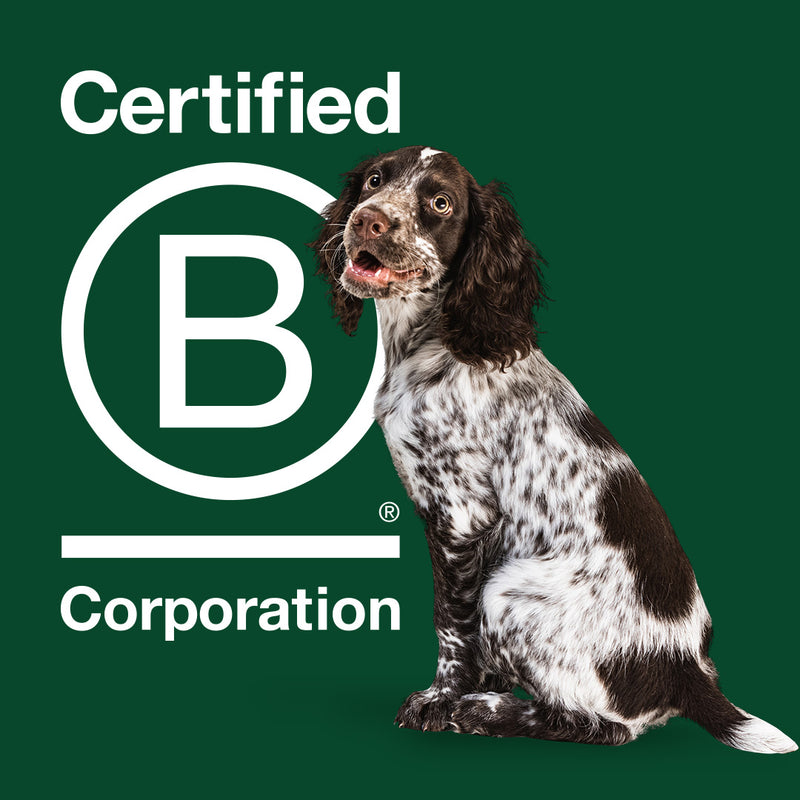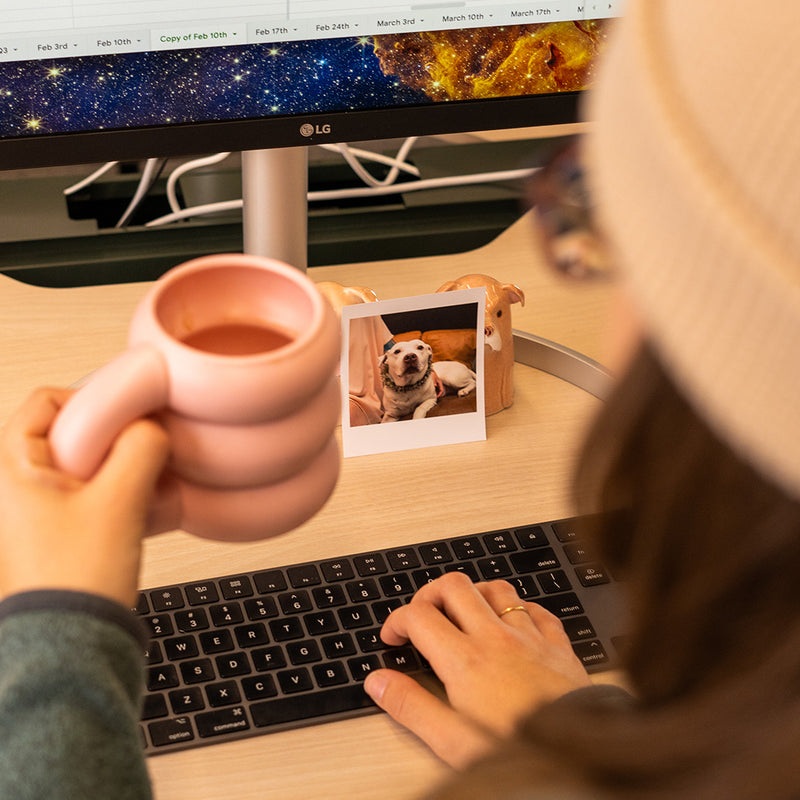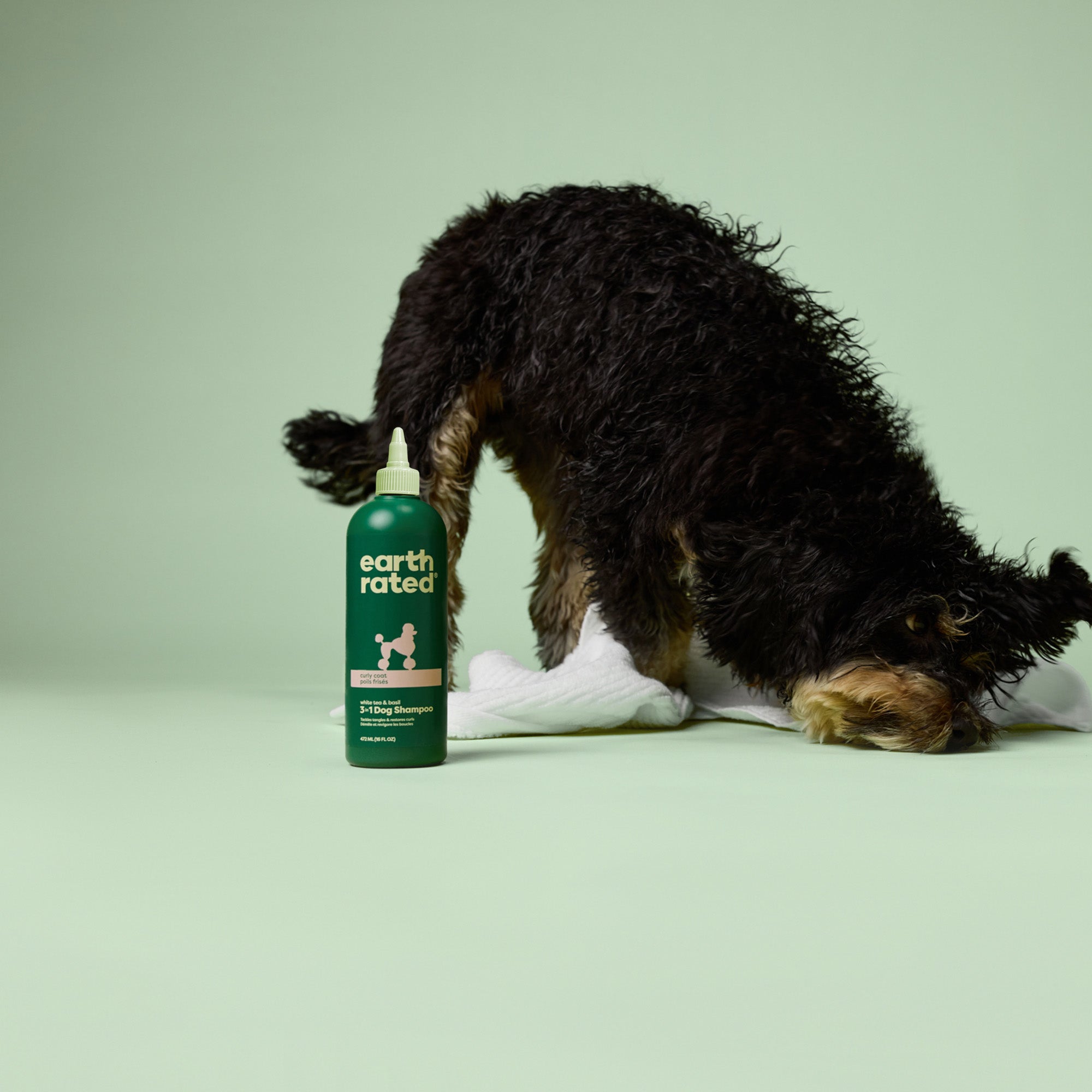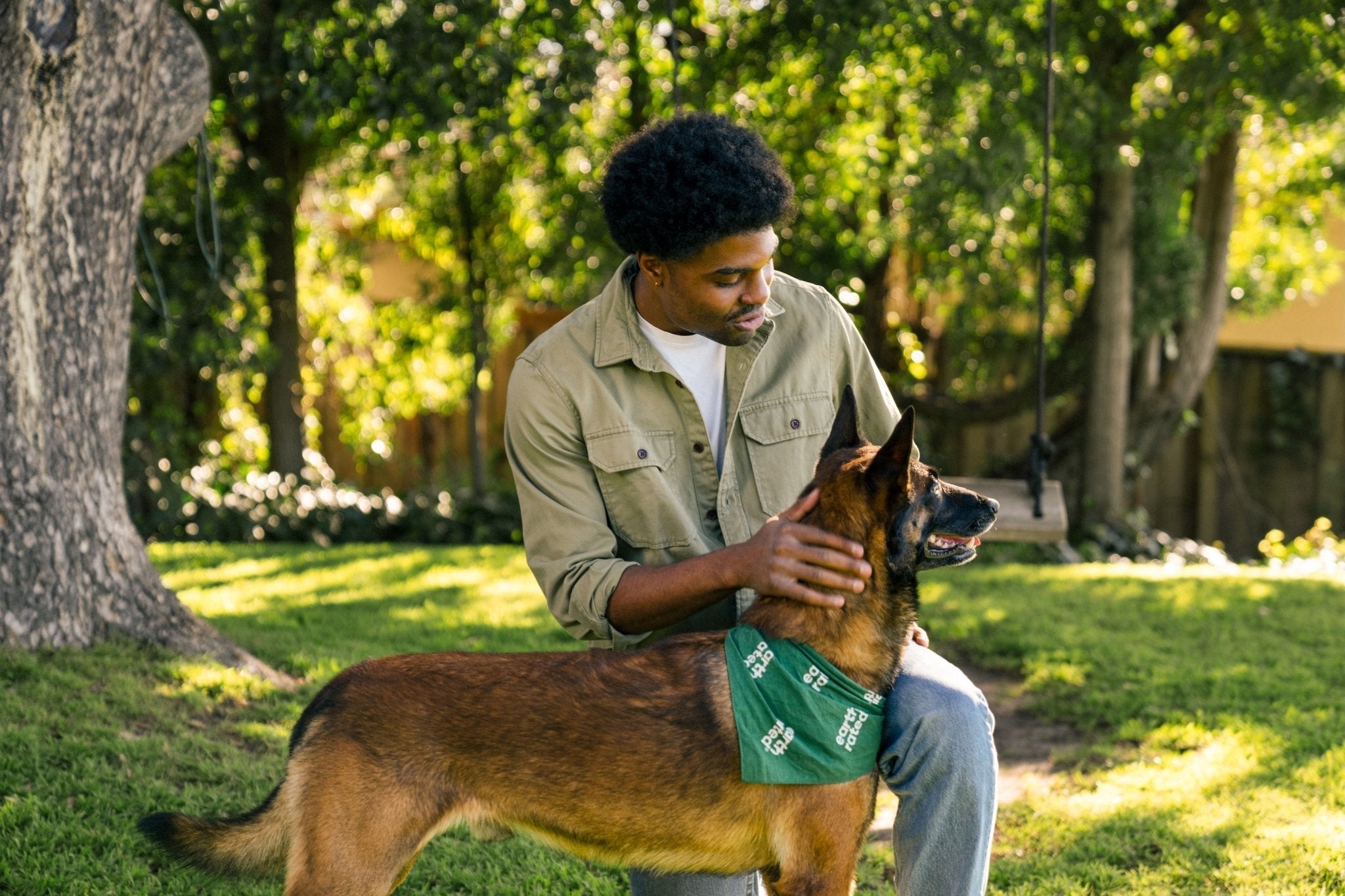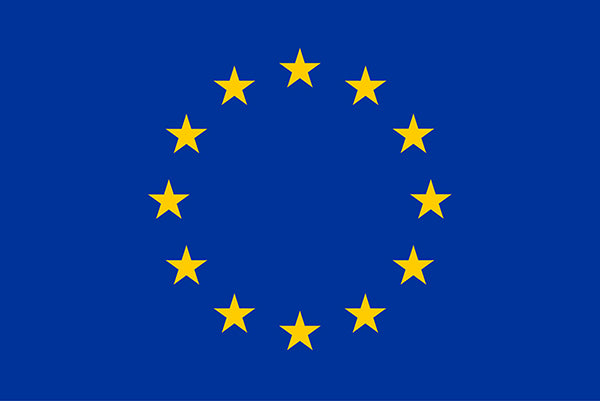Does your dog bark, lunge, or growl at other dogs or strangers out of nowhere? If so, you likely have what's commonly referred to as a reactive dog.
“A great number of reactive dogs are sadly very scared, while others are so frustrated and angry that they react intensely,” explains Aryel Lafleur, an accredited professional force-free dog trainer.
Luckily, reactive dogs’ behavior can be addressed and managed. With proper reactive dog training, your dog can feel much more safe and secure. We’ll explore exactly how to do this below.

Understanding Reactive Dogs
“Some people believe that reactive dogs are mean dogs, and that they act this way to dominate or take control over the owner or the trigger,” explains Ayrel. “However, the reality is simply that the dog is experiencing big emotions and cannot deal with them.”
Reactive dogs are often seemingly normal and well-adjusted until their trigger is presented. These dogs can be triggered by everyday situations, like cyclists rolling by, or by things like strollers or the sound of a car horn. Other dogs and other people are very common triggers, too.
The first step in training your dog to be less reactive is identifying what their particular trigger or triggers are. Your dog likely isn’t triggered by everything so knowing what it is can help you work on avoiding or even completely eliminating it.
So, what causes reactivity in dogs? Common reasons why reactive behavior develops include:
- Past traumatic events with their particular trigger (e.g. dogs, strangers, cyclists)
- A past need to guard their resources, such as food
- A lack of socialization with other people or dogs
- Genetics causing a chemical or hormonal imbalance
Learning about your dog’s past history and what could have caused their reactivity will give you a deeper understanding of their fears. This is particularly useful if you adopted your dog and weren’t present during their key socialization period, which is usually when they develop their negative (and positive) associations.
The Role of Environment in Reactivity
The second step in dog training for reactive dogs is understanding the importance of creating space away from their trigger. You may notice that your dog is reactive when they feel trapped with nowhere to escape but are fine if they have plenty of open space with room to avoid their trigger.
Finding how much space they need to not feel threatened is key to helping you manage their environment and reactivity.
Here are a few tips to help you create space between your dog and their trigger:
Managing your dog’s environment and setting them up for success is a key component of dog reactivity training. By seeking out situations your dog can handle (and avoiding those they can’t), you may minimize their reactivity.

Fundamentals of Reactive Dog Training
Switching a dog’s associations from negative to positive will take a lot of time, patience, and empathy. Below are basic practices for training reactive dogs but if you feel like you need a little extra help, reach out to a local fear-free dog trainer. They will be a great support and resource for you and your dog.
Positive Reinforcement
Old training techniques involving dominance and intimidation are just that—old. Today, we know a lot more about how dog training works than we did just a decade ago. The most effective training method is positive reinforcement training.
This method is based on basic physiological principles. When you reward a dog for doing something you want them to do, they will do that thing more. That’s why treats are an effective training tool. 😋
You can apply this to training a reactive dog. When your dog sees their trigger and doesn’t “react,” give them a treat. You want to reward them for the behavior you want them to do (which, in this case, is typically ignoring the trigger), as this is more effective than punishing them for the behavior you don’t want them to do.
Fear-based techniques like punishment only produce more fear. When your dog is doing something out of fear, adding more fear tends to only make the situation worse!
There are plenty of dog training books that highlight positive reinforcement for you to check out.
Desensitization
Removing the fear associated with a trigger is an effective training technique. This is known as desensitization and is particularly useful in situations where controlling the environment is difficult (such as busy streets).
Desensitization involves gradually exposing your dog to their trigger in a safe way and is very effective at treating phobias. The trick is to start way below your dog’s threshold (the point where they usually react) and slowly increase the exposure from there.
For example, if your dog barks at the sound of a vacuum cleaner, maybe start by playing recordings of vacuums at a very low volume from another room while rewarding your pup for staying calm. Then, slowly increase the volume over time, all while keeping your dog comfortable.
If your dog is scared of being around other dogs, try having a friend walk their calm dog outside of your home while your dog watches through a window. When your dog doesn’t get upset, reward them and praise them. 👏
Pairing desensitization with positive reinforcement training is the best way to teach a dog that these everyday objects won’t hurt them.
Counterconditioning
This term may sound complicated, but don’t let that scare you off! It’s rather straightforward. This fancy term basically means replacing your dog's negative reaction to a trigger with a positive one.
So, instead of associating the mailman with a fit of barking, you want your dog to associate the mailman with yummy treats instead. This involves pairing the trigger (the mailman) with something your dog likes (treats).
Once again, you want to start before your dog barks or growls. You want to reward them for remaining calm, so it needs to be at the point where they are still calm.
Counterconditioning requires a lot of time and repetition. You’re forming new habits for your dog, which takes time. But when paired with the other training techniques we’ve discussed, counterconditioning is effective.
Here’s a handy table to summarize these training techniques:

Incorporating these techniques into your training routine can help your reactive pup lessen their fear and embrace a calmer, happier way of life.
Advanced Training Strategies
Basic training techniques work great for most dogs, but some may need a bit more help. Advanced training techniques can be exceptionally helpful, especially if your dog is very reactive or has many triggers.
Here are some exercises to help your reactive pup become a social butterfly (or at least a canine who can tolerate the mailman without an operatic outburst).
Focus Games
Many dogs can behave perfectly fine without distractions. But when they’re out and about, they can suddenly forget all of their training! Dogs don’t always have the longest attention spans or the best focus. Luckily, you can train your dog to focus better, which can only help with training.
Focus games teach your dog to pay attention to you instead of the trigger. When your dog is focused on you and not the thing that scares them, keeping them calm is much easier!
This can be as simple as asking your dog to "sit" or "stay" for treats while having some distraction nearby. Start with very few distractions at home. Then, gradually increase the difficulty as your dog’s ability to focus on you increases.
Controlled Exposure
Remember desensitization, that slow and steady approach to exposing your dog to triggers? Controlled exposure takes it a step further.
Aryel explains her training technique: “With fearful dogs that tend to flee when confronted with triggers, I tend to create a plan to teach the dog to take the initiative towards the element that scares him, being mindful of what we call a conflict of motivation.”
Doing this is rather simple. She instructs owners to reward their dogs whenever they look at their trigger without reacting. She warns, "It’s crucial not to bribe them with food or lure them to where you want them.” You want them to explore at their own pace and reward their calm exploration (even if it’s only a glance).
Introducing New Stimuli
A new environment can be overwhelming for reactive dogs. Some dogs are just not as confident or easygoing as others. If you parent one of these dogs, it’s important to be careful when introducing them to something new because you don’t want them to create another negative association.
When introducing any new environments or stimulations try to take things as slow as possible. Let your dog sniff around and get acclimated to these new experiences and reward them for calm behavior.
This will help them build positive associations with the new places and items and lessen the possibility of them creating negative associations.
When to Call in Help
Let's face it, sometimes, we dog parents need a helping paw! Professional trainers can step in and help you train your reactive dog if you’re ever stuck. These professionals can create a customized plan for your dog and help you navigate particularly challenging situations.
We highly recommend considering a professional if:
- Your dog’s reactivity is causing safety concerns
- You’ve been trying to train your dog yourself but haven’t seen any progress
- You feel overwhelmed or frustrated with training
Supporting Your Reactive Dog
Often times, being a pet parent to a reactive dog comes with daily challenges that require plenty of management and pre-planning.
Luckily, there are some ways to make life with your reactive dog easier:
Common Mistakes to Avoid
Training your dog can sometimes feel like walking through a minefield! Setbacks are expected, of course. Progress is not a straight line, but that doesn’t mean you have to walk blindfolded!
Here are some of the most common mistakes you should avoid when training your reactive dog.
-
Raising your Voice & Scolding
When dogs are reactive, they are stressed. Raising your voice at them only causes more stress! It may make you feel better in the moment, but it doesn’t address the behavior (and can even make it worse).
Instead, focus on positive reinforcement, and don’t put your dog in positions where you feel the need to scold. If your dog reacts to a trigger, you’ve pushed them too far.
-
Not Having the Right Equipment
You don’t need anything except treats to train your dog. But there are a few items that can make the process much easier. Aryel recommends a comfortable harness that attaches in front of your dog, a big treat pouch filled with high-value treats, a 6ft leash, and a basket muzzle if necessary.
-
Unrealistic Expectations
Every dog learns at their own pace. Comparing your dog to a seemingly perfectly behaved dog down the road will only make you feel defeated. Remember, some triggers might take longer to overcome than others.
Instead, focus on small wins and the amazing bond you’re building with your dog by getting to know them on a deeper level.
In Summary
Transforming your reactive dog from a fearful pup into a total chill master isn’t a walk in the park (especially if there are other dogs around!). BUT, that doesn’t mean it isn’t possible. With the right training, the vast majority of dogs can overcome reactivity.
Remember, the key is patience and positive reinforcement. There will be setbacks, and there may be moments when you want to give up. But with consistent effort, you can absolutely help your dog become more relaxed and less stressed! You’ve got this! We believe in you. 💪✨
FAQs
Can reactivity be trained out of dogs?
Reactivity can be trained out of dogs through positive reinforcement, desensitization, and counterconditioning. The trick is to re-train your dog to see their trigger as something that won’t hurt them.
How do I train my dog to be less reactive?
You can train your dog to be less reactive by first learning what is triggering the reactivity and then putting enough space between your dog and that trigger so they don’t feel threatened.



